Illustrations from a
Coptic Gospel, Damietta, Egypt, 1179-80
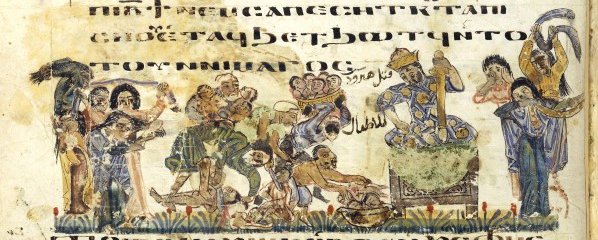
Massacre des innocents
Folio 6v. Massacre of the Innocents
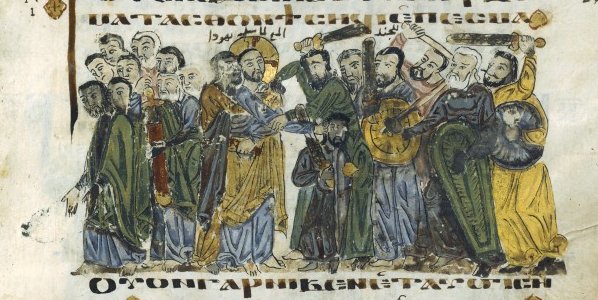
Arrestation du Christ
Folio 79r. Arrest of the Christ


Referenced on p44, God's Warriors, Knights Templar, Saracens and the Battle for Jerusalem by Helen Nicholson & David Nicolle:
'The Betrayal' in a Coptic Gospel manuscript made in AD 1179/80. The soldiers reflect a local Egyptian militia rather than the elite troops of the Islamic Middle East. They have typically Arab straight, broad swords with down-turned quillons. Some men also carry the tall, flat-bottomed shields used by Middle Eastern infantry rather than cavalry.
Some of the soldiers carry flat-based januwiyah shields (p18, Saladin and the Saracens by David Nicolle).
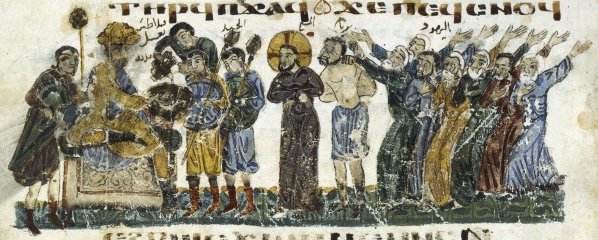
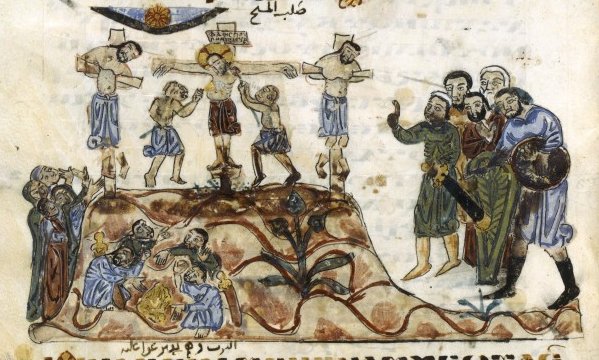
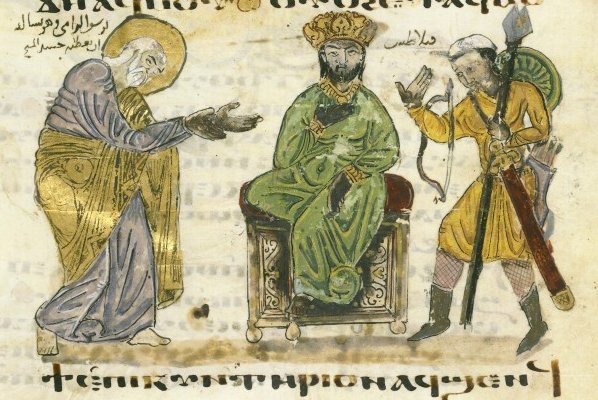
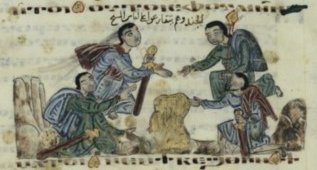
Title : Tétraévangile
Publication date : 1178-1180
Type : manuscript
Language : Coptic
Format : Parchemin. - 286 f. - 385 x 275 mm. - 74 vignettes
Description : Bible. N.T. Evangiles
Description : Le portrait du patriarche d'Alexandire Marc II figure au début du manuscrit.
Description : Bibliothèque de l'Oratoire. Bibliothèque de Mazarin.
Rights : public domain
Identifier : ark:/12148/btv1b52508833q
Source : Bibliothèque nationale de France. Département des Manuscrits. Copte 13
Relationship : http://archivesetmanuscrits.bnf.fr/ark:/12148/cc103661q
Provenance : Bibliothèque nationale de France
Gallica / Bibliothèque nationale de France, Cote Copte 13
Referenced as figure 166 in The military technology of classical Islam by D Nicolle
166A to 166J. Manuscripts A - Guard at Gethsemane, B - Soldiers at the Crucifixion. C - Massacre of the Innocents, D - Herod's Guards, E - Beheading of the Baptist, F - The Betrayal, G - Guards of Pilate. H - Crucifixion, I - Guards at the Tomb, J - Executioner, Gospel, 1179-80 AD, Coptic, Bib. Nat. Ms. Copt 13, ff. 131r, 274r, 6v, 5r, 40v, 79r, 82v, 83v, 86r and 103r, Paris
pp. 411-412
The Saljūq and Crusader conquests of eastern Anatolia and the Syrian coast caused Egyptian recruitment of soldiers from the Armenian heartland to be severely limited in the late 11th and 12th centuries.104 With the Crusader occupation of the Cilician plain in Lesser Armenia in 1109 AD, however, many Armenian warriors apparently offered their services to Fāṭimid Egypt. There they were to form the bulk of the juyūshi troops under the leadership of a Christian Armenian, Bahrām, who subsequently became the Caliph's vizier.105 In fact, most such Armenian infantry
104. B. I. Beshir, The Fatimid Caliphate 386/996-487/1094, (Unpub. Ph. D. thesis, London Univ. 1970), loc, cit.
105. Canard, "Un Vizir Chrétien," pp. 94-97.
archers in Egypt were now apparently Christians.
These Armenians were clearly catholic in their tastes for employers, serving Nūr al Dīn of Syria in both siege and wider operations, the Mungidhites of Shayzar, the Crusader states where they often fought under their own lords, and the Saljūqs of Rūm.106 The influence of those varied employers may be reflected in Armenian manuscripts showing warriors. Muslim as well as persistent Byzantine styles mingle in various mid- or late 13th century sources from eastern Armenia (Figs. 248, 250 and 251), while Frankish influence is obvious in a manuscript dated 1318 AD (Fig. 654).
106. Eliséeff, op. cit. p. 733; Usāmah ibn Munqidh, op. cit., p. 106; Smail, op. cit., p. 47; S. Vryonis Jr., "Byzantine and Turkish Societies and their sources of manpower," in War Technology and Society in the Middle East, V. J. Parry and M. E. Yapp edits., (London 1975), p. 141.